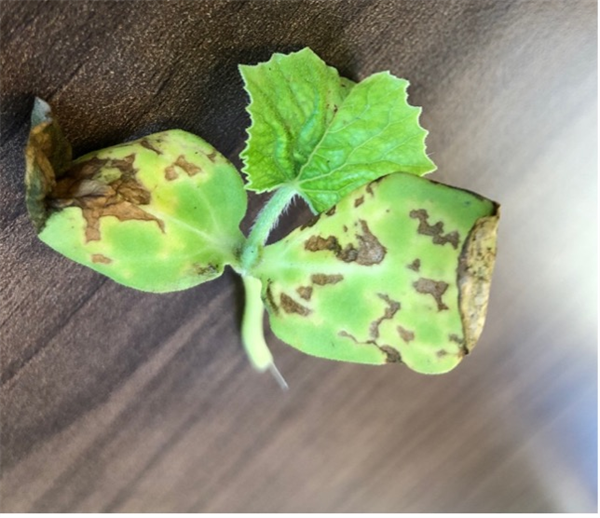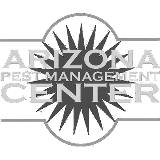Bacterial fruit blotch (BFB) of melon is caused by the bacterium Acidovorax avenae subsp. Citrulli. The bacteria produces large olive green to brown water-soaked lesions on fruit, making them unmarketable. Symptoms of BFB on seedlings begin with water-soaked areas on the lower surface of the cotyledons and inconspicuous lesions on leaves. BFB lesions will become necrotic often with yellow halos. Lesions are frequently delimited by veins. Infected seedlings collapse and die. Greenhouse conditions are usually favorable for dispersal and establishment of pathogen. Thus, good greenhouse practices and sanitation is extremely important. Clean transplant trays must be used (disinfect trays if they will be reused) and new soil. Destroy any volunteer seedlings and keep the area in and around the greenhouse weed free. Avoid overhead watering if at all possible, or water in the middle of the day so that the plants dry thoroughly before evening. The bacterium can spread on mist and aerosols. Relative humidity should be kept low through proper watering and good air circulation in the greenhouse. Separate different seedlots, to reduce lot-to-lot spread. Monitor these isolated seedlings daily and destroy trays where symptoms develop. The remaining trays should be sprayed with a labeled bactericide and the applications continued until the plants are transplanted to the field. The pathogen can be seedborne, so growers should only use seed that has been tested for the presence of the pathogen by a reputable testing facility. Management of BFB includes a combination of preventing the introduction of the pathogen, sanitation to eliminate any inoculum present, and the use of bactericides if the disease appears. There are no commercially available watermelon cultivars that are resistant to bacterial fruit blotch, but there is some variation in susceptibility among cultivars.







